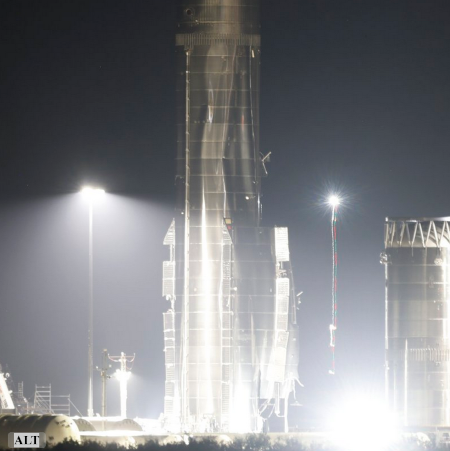Two suborbital test launches in Poland during the past month
According to different reports, it appears Poland successfully completed two different suborbital test launches since October, both launching from Poland’s Central Air Force Training Range in Ustka.
First, on October 24, 2025 a consortium of private and government entities successfully launched a three-stage suborbital rocket.
The project began in early 2020 and received roughly 18.6 million zł (€4.1 million) in EU funding through the European Regional Development Fund. The consortium is led by state-owned aerospace company WZL-1, and includes the Military Institute of Armament Technology (WITU) of the Ministry of Defence, and defence manufacturer ZPS Gamrat. While initially intended to carry payloads into space, WITU has stated that the technology could also be used for the development of anti-aircraft and tactical missiles.
According to a government official, the rocket reached a planned altitude of 40 miles, short of space.
Next, on November 22, 2025, the Perun rocket built by the Polish startup SpaceForest was launched (translated by Google):
On Saturday, just before 2 PM, the company SpaceForest successfully launched its Perun suborbital rocket from the Central Air Force Training Ground in Ustka, Poland. The rocket carried research payloads from across Poland. This was the third test flight of this rocket.
According to Marcin Sarnowski, a representative of SpaceForest, the flight went according to plan. The launch time was announced approximately 40 minutes before the countdown, in accordance with the company’s earlier announcements. The flight was visible from the beach. “During the flight, we managed to test many systems and experiments. We will know all the details soon,” said Sarnowski.
It increasingly appears Poland is developing its own rocket industry. SpaceForest for example has deals to launch its suborbital rocket from multiple spaceports in the Azores, on a ocean platform in the North Sea, and in Norway’s Andoya spaceport.
According to different reports, it appears Poland successfully completed two different suborbital test launches since October, both launching from Poland’s Central Air Force Training Range in Ustka.
First, on October 24, 2025 a consortium of private and government entities successfully launched a three-stage suborbital rocket.
The project began in early 2020 and received roughly 18.6 million zł (€4.1 million) in EU funding through the European Regional Development Fund. The consortium is led by state-owned aerospace company WZL-1, and includes the Military Institute of Armament Technology (WITU) of the Ministry of Defence, and defence manufacturer ZPS Gamrat. While initially intended to carry payloads into space, WITU has stated that the technology could also be used for the development of anti-aircraft and tactical missiles.
According to a government official, the rocket reached a planned altitude of 40 miles, short of space.
Next, on November 22, 2025, the Perun rocket built by the Polish startup SpaceForest was launched (translated by Google):
On Saturday, just before 2 PM, the company SpaceForest successfully launched its Perun suborbital rocket from the Central Air Force Training Ground in Ustka, Poland. The rocket carried research payloads from across Poland. This was the third test flight of this rocket.
According to Marcin Sarnowski, a representative of SpaceForest, the flight went according to plan. The launch time was announced approximately 40 minutes before the countdown, in accordance with the company’s earlier announcements. The flight was visible from the beach. “During the flight, we managed to test many systems and experiments. We will know all the details soon,” said Sarnowski.
It increasingly appears Poland is developing its own rocket industry. SpaceForest for example has deals to launch its suborbital rocket from multiple spaceports in the Azores, on a ocean platform in the North Sea, and in Norway’s Andoya spaceport.














